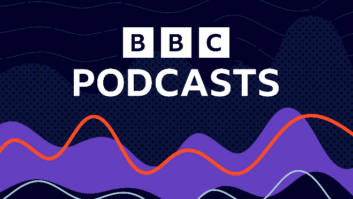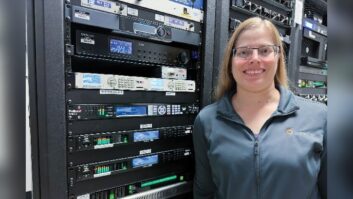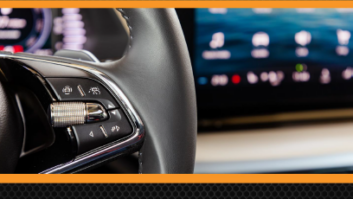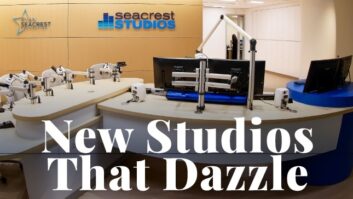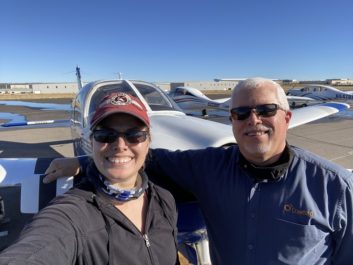
For a lot of broadcasters, the pandemic triggered a reevaluation of priorities. Many put the brakes on projects, for understandable reasons.
At Crawford Broadcasting Co. we went the other way, believing that the way we would operate going forward would be different than it had been in the past, and that we had to be prepared.
In Los Angeles we had to shut the doors and keep everyone at home for a couple of weeks after some staffers got sick; but not long before, we had converted the L.A. facility to AoIP using Wheatstone’s WheatNet-IP system, featuring I/O “Blades” and E6 and LX control surfaces.
As a result, when the lockout occurred, our people were able to operate the station from their homes, including live talk programs. That showed us what the new operating model would be, and we began taking a hard look at our other top markets.
We had upgraded Chicago, but we determined that three additional markets, with a total of 21 AM and FM signals, needed infrastructure upgrades.
All had mid-2000s vintage Wheatstone TDM systems, which we’d planned for replacement eventually. The pandemic pushed that schedule up. Denver topped the market list in part because is the hub of the company’s technical operation.
We ordered equipment in late summer. In the period until delivery in November, we planned. And planned. We identified every audio signal in the facility, noting the location, routing and whether it was analog or AES (mostly the latter). We then culled the list, striking sources that were no longer needed.
We turned to logic signals, identifying and culling until we had a good list of required logic I/Os. We then made Blade source and destination assignments and a complete list of routings. Now we knew what we would need to connect every signal.
Because the Blades can be located anywhere in the facility, our planning included Blade placement close to audio and logic sources and destinations. As a result, wire runs would be short, in most cases just a few feet.
[Related: Read “The Real World of AoIP,” a free Radio World ebook]
While we were waiting for equipment, we purchased Cisco switches, including a core switch CS3560 stack that would serve as the hub of the operation and a satellite CS2960 switch for each studio that would be trunked to the core switches. Those switches were programmed and we installed the core switch in a rack in the TOC, immediately above the existing Cisco core switches. We connected the two switch pairs together and moved the whole Wheatstone gigabit IP network over to the new switch.
Four control rooms would have to be converted; the plan was to do these in order from the least impact to the greatest. Our oldies music station is voice-tracked and the control room can be bypassed easily, so that’s where we started. The last control room to be upgraded would be our big talker, where live programs and in-studio hosts and guests were an all-day affair.
Dry run
Before we would start on a control room, we would set up the equipment for that room on the bench in the engineering shop, connecting each piece to the satellite switch that would go into that studio and trunking the satellite switch back to the core switch.
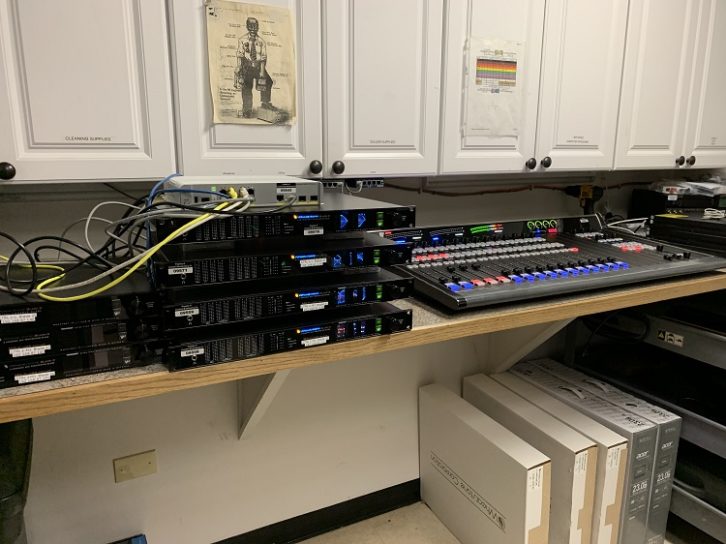
We would power everything up, configuring each Blade with the correct IP address, Blade ID, name and software version. Sources and destinations would then be defined and named to save time and confusion later.
The LXE control surface for each room was set up, configured and tested. We were familiar with the Blades because we had been using them for several years, but the LXEs were a new animal, newer even than the LX surface we’d used in the Los Angeles control room the previous summer, and there was a definite learning curve.
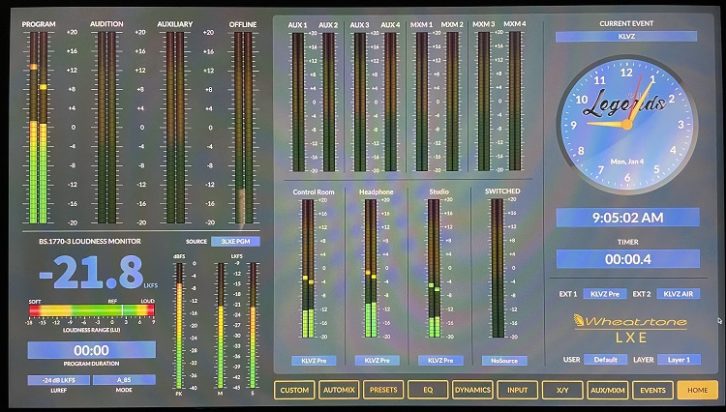
At one point, an errant click resulted in all the programming for a surface, the first one we tried to set up, being wiped out, leaving the surface as a very expensive brick or doorstop. While that gave us a scare, it turned out to be much worry about nothing. Wheatstone had provided us with a thumb drive containing all the programming, so it was a simple thing to get back where we needed to be and get the surface configured.
With the Blades and surface benched and stacked in the order and with the spacing they would have in the studio, we used our spreadsheets showing the required connections to make the needed cables. We used Cat5e riser cable for everything.
RJ-45 connectors were crimped onto the ends that would plug into the Blades, and labels were affixed noting Blade number and input, output or logic port number. Sufficient length was left on each cable to route it into place, cut it to the exact length needed and affix the XLR connector on the other end. Admittedly that was a little wasteful, but Cat-5e riser cable is cheap. It was a huge time-saver for in-studio work, important because in some cases we would be under pressure to get the studio back online.
No insulation-displacement blocks were used; wiring was all point-to-point, and again, since the Blades were in close proximity to the source and destination equipment, this was an efficient way to connect everything. It also eliminated many points of potential failure.
The plan called for doing one control room per week, a pace which gave us time to rest up between the physically-demanding parts of the project and to bench the new gear and get the pre-wiring done.
We would start early, usually before 6 a.m. Demo of the old gear naturally came first, and all existing in-studio wiring was, for the most part, removed. The trick was identifying the few cables that would be needed in the new installation. For example, the mic cables from the adjacent talk studio and the control room mics had to be found and secured, as did the wiring feeding talk studio talent stations. We would have made a lot of work for ourselves if we accidentally demoed that wiring.
Filling the holes
The studio cabinets had been lightly used so there was no need to replace them. But there was one problem: each tabletop had a large cutout where the Wheatstone G6 surfaces set down in a flush mount. We had to do something about those holes.
In the planning phase, our thought was to have new tabletops fabricated. This would be expensive and a lot of trouble, but how else would we deal with those holes? Jay Tyler at Wheatstone had a simple solution: a steel plate that would cover the hole. We questioned about how this would look and feel, but he sent us photos of facilities that had used the custom cover plates, and the pics convinced us.
The steel plates came with the LXE surfaces. They were sturdy, laser-cut 13-gauge 0.090-in. black powder-coated plates that were drilled with countersunk holes on the back side. We dry fit them, marked and drilled the holes in the tabletop, then ran a thin bead of silicon around the edge. Screwed into place, the plates covered the holes and the low-profile LXE surfaces sat centered on them so that unless someone bends down to look under the surface, they will never know they are there.
Not your grandpa’s console installation
Surfaces were set into place and screwed to the steel plates to keep them from moving around. They were then connected with a power supply cable and a piece of Cat-6 cable. The only other connection to the surface was the supplied headphone jack, which was mounted using the supplied bracket under the front lip of the tabletop on the right side.
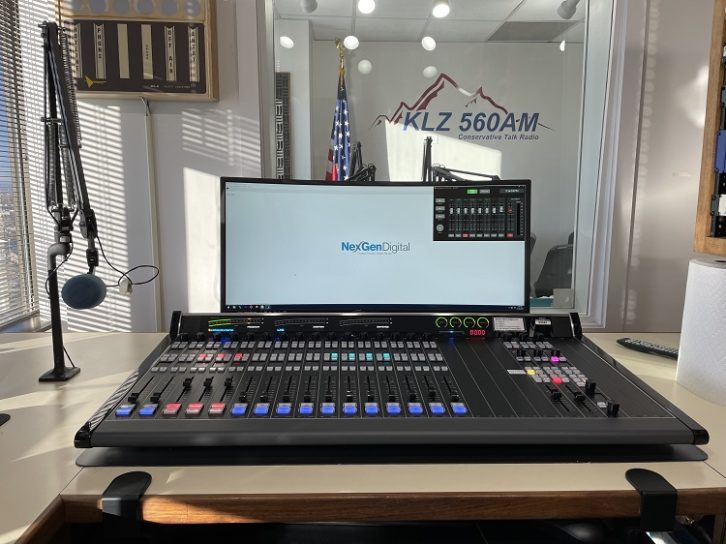
Most of the rest of the work in each room involved pulling the pre-made Blade network, source, destination and logic cables through the racks/pedestals, routing them to the proper place, cutting them to exact length, soldering on an XLR cable and affixing a self-laminating wire label. Cris did most of that work; for some reason, he enjoys that kind of thing. Amanda dealt with other cabling such as mics, headphones and Cat-5e/Cat-6 network cables (just about every piece of equipment needs a network connection these days).
In one studio, we took advantage of the USB “sound card” connection provided on the M4IP microphone processor Blades, mounting a USB jack on the talk studio tabletop for hosts to plug in their laptops for digital on-air playback of audio clips and the like — no more adapting an unbalanced line output to feed a channel on the mixer.
Amanda’s husband Jordon, handy with a drill and the guy who built the table in that talk studio, took care of mounting the USB jack for us. Cris’s wife Phyllis was on hand for one of the studios, keeping us from making too big a mess and providing other support as needed. Many hands make light work!
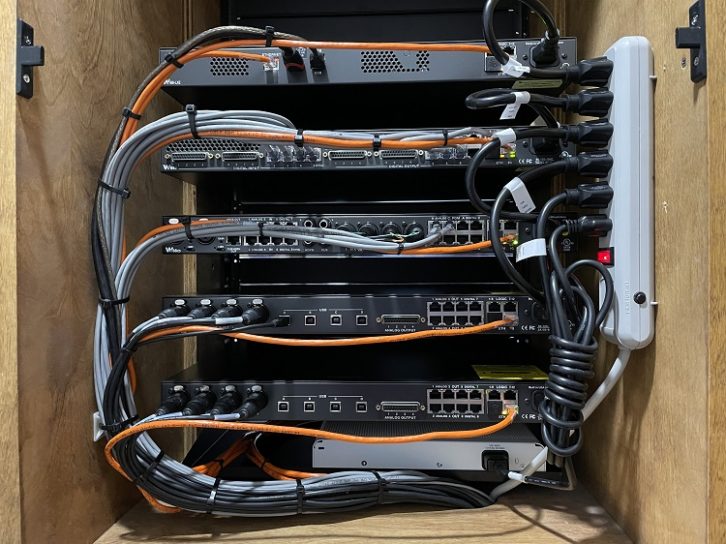
Once the physical wiring in each room was done, we spent a couple of hours testing everything. Despite our planning, there were still routes we’d overlooked. Mic processors had to be set up, mics had to be tested, headphone feeds with talkback confirmed and logic tested. Studio tallies (on-air lights) were a piece of cake using the logic in the Blades.
We use Eventide BD600W+ profanity delays in Denver, and the “W” in the model name indicates WheatNet connectivity; those delays use native WheatNet I/O and logic. It took a little time to figure out how to route the bidirectional logic to and from the delay units, but once done we had a brightly lit magenta dump button on each LXE surface that would remotely activate the dump feature on the corresponding Eventide delay. The button then turns yellow until the delay is rebuilt.
This is only a test
Interfacing to the Sage Digital ENDEC EAS units was a snap using logic, a digital input and analog outputs from a nearby Blade.
The receivers for the LP1 and LP2 are located in the TOC and their AES signals are fed to a TOC Blade and routed to Blades in each control room. Analog outputs are then used to feed the monitor source inputs on the ENDECs. A logic input to a Blade was used to take the relay output from each ENDEC and use it to make a temporary connection directly from the ENDEC output to the delay input for each station. RCS NexGen runs the test intro and actuates the ENDEC RWT or RMT forward function via IP, and the logic connection does the rest.
We took advantage of the eight-channel utility mixer provided in each of the Wheatstone Blades to mix various signals and provide for downstream switching, also controlled by NexGen. We also used the audio processors in some of the Blades to generate pseudo-air-monitor pre-delay feeds for real-time headphone monitoring, “off-air” recording and the like. Wheatstone provided great purpose-built processor presets for that.
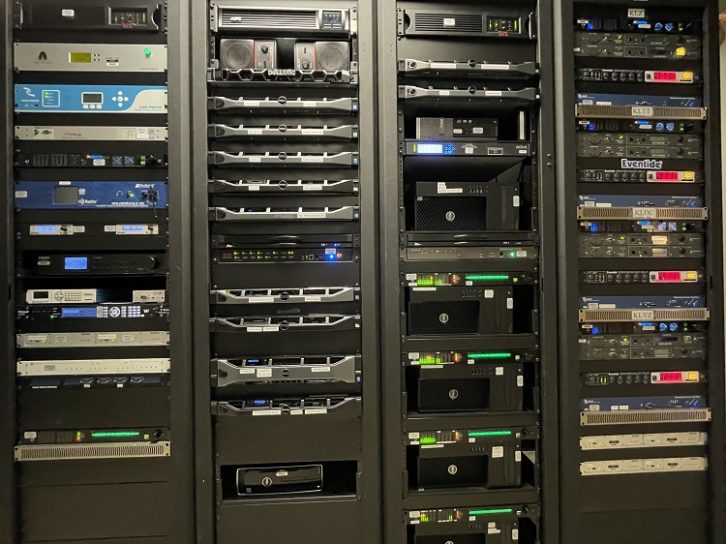
With all four control rooms done and operating, the final stage of the project was removing the Wheatstone TDM bridge router and its cabling and insulation displacement blocks from the TOC.
Now the overhead cable ladders are positively empty. What little is up there is orange WheatNet-IP Cat6 cabling and other network Cat5e cabling. As in the studios, the Blades in the TOC are near the equipment to which they connect, which keeps cable runs short and, in most cases, within the same equipment rack.
Start to finish, the physical project took a little over three weeks. Again, we did one studio a week, each on a Monday, until we got to the one for our busy talker, and we did that on the Saturday before Christmas (they ran “best-of” shows that day to free up the studios). It took a couple more days to clean up the TOC after the bridge router extraction.
Overall, including planning, the project took about three months. Without planning and pre-wiring, the physical studio work would have taken days instead of hours. By the time we got to the last studio, we had that down to under eight hours.
So what does this do for us other than providing us with cool new control surfaces and getting rid of a lot of old wiring?
It gives us complete remote access and configurability for the facility. The very infrastructure of the studio complex can be altered remotely. Need this source on that channel in another studio? Amanda can do that on her iPhone. Need to route this audio server directly to the transmitter because some piece of equipment failed? Can do … from anywhere with an internet connection.
The pandemic has changed the way we operate, no doubt about it. Flexibility and remote-ability are must-haves, and this new 100% AoIP infrastructure provides that and much, much more. We are now as ready as we can be for whatever comes.
Cris Alexander, CPBE, AMD, DRB, is director of engineering of Crawford Broadcasting and technical editor of Radio World Engineering Extra. Amanda Hopp, CBRE, has been chief engineer of Crawford’s Denver cluster since 2007.







